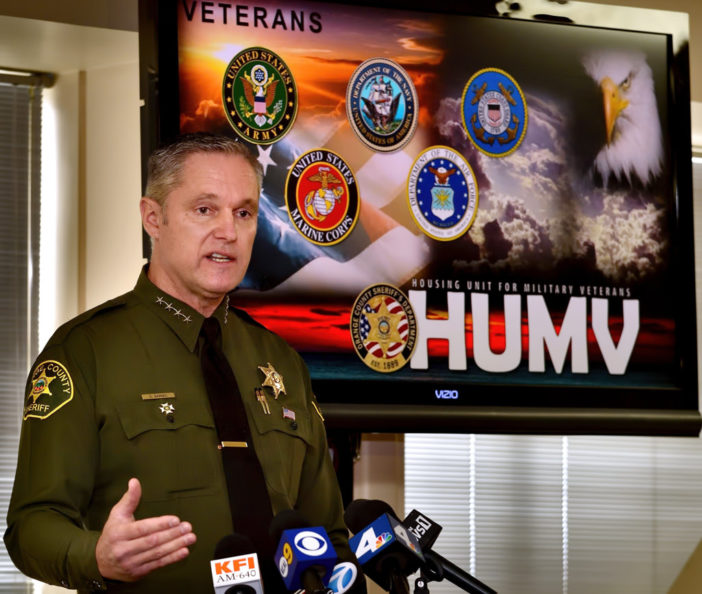U.S. Army Veteran Garrett F. earned two Purple Hearts while serving as an infantryman during deployments to Iraq and Afghanistan.
He was shot in the chest and shoulder on combat missions in his five-year career.
Post-release, Garrett hurt himself.
Seeking to satisfy the void he felt from lacking the adrenaline rush of combat, Garrett fell into drug addiction and, eventually, crime. He now is serving time for a drug possession conviction at the Theo Lacy Facility in Orange.
But Garrett, 39 and married, has more reason than ever to believe he has a shot at staying sober and getting his life back on track.
On Jan. 2, 2020, he will become the first inmate assigned to the Housing Unit for Military Veterans (HUMV) at the Theo Lacy Facility. The 32-bed section is reserved for select veterans incarcerated for non-violent crimes.
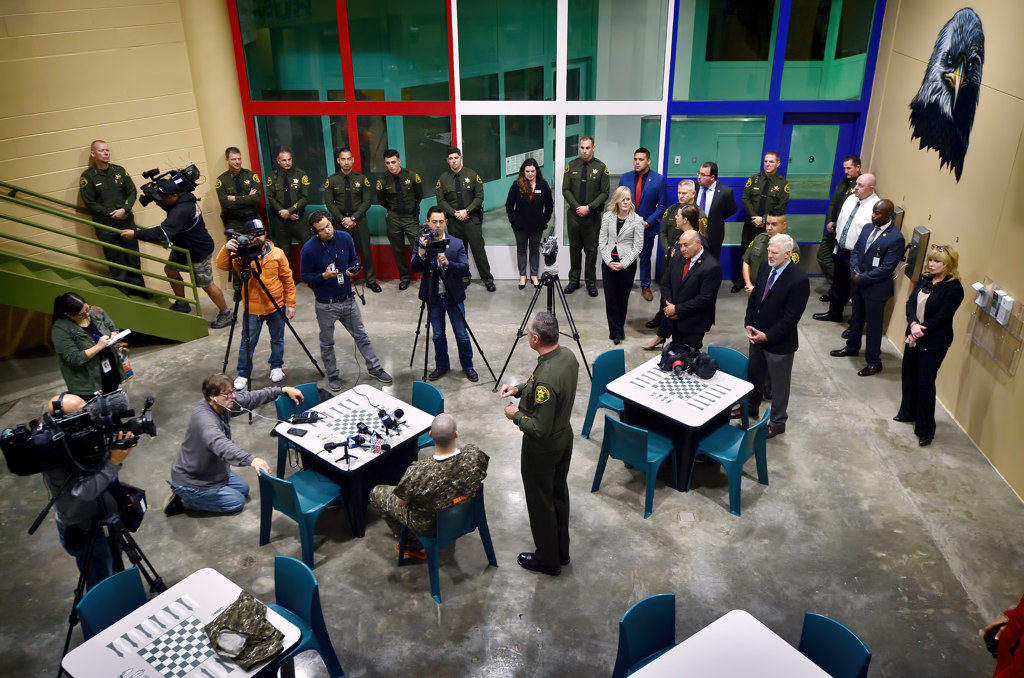
Garrett F., a Purple Heart veteran serving time at the Theo Lacy Facility, with Sheriff Don Barnes, talks to the media about the new Housing Unit for Military Veterans (HUMV).
Steven Georges/Behind the Badge
Modeled on similar units in other states, the HUMV is the OCSD’s first-ever such housing unit designed to support successful transition for veterans post-release.
The HUMV includes patriotic-themed murals on the walls, 55-inch televisions, game room-style tables, and flags representing each branch of the military.
To participate in HUMV, inmates must meet specific security criteria and agree to actively participate in the programming.
Inmates assigned to the HUMV will get access to additional privileges including more out-of-cell time and programming tailored to veterans such as peer mentoring, post-release employment resources and workshops, financial planning classes, and substance abuse services, among other programs.
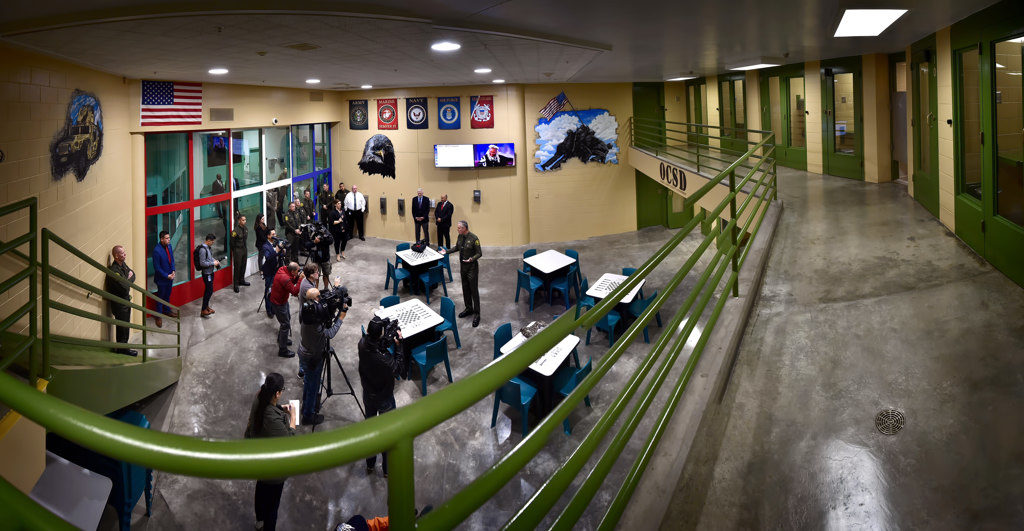
The Housing Unit for Military Veterans (HUMV) at the OCSD Theo Lacy Facility has 32 beds, patriotic-themed murals on the walls, big-screen televisions, game room-style tables, and flags representing each branch of the military.
Steven Georges/Behind the Badge
“It’s amazing,” Garrett told reporters who toured the facility Dec. 30. “I’m very happy. Just excited. You guys are giving me this opportunity to rebuild myself and get back to my family, my life.”
He added: “Addiction is my worst enemy, and I really want to change that. And I think the program you guys started here is a blessing in disguise.”
Sheriff Don Barnes, joined by Congressman Lou Correa and state Sen. Tom Umberg, said the HUMV is critical for veterans to receive the services they need after making poor choices.
“We’re giving (Garrett) every opportunity to make positive decisions, reconnect with his family, and be the guy that I know he is,” Barnes said. “We’re going to serve him. We’re going to give back to him, and we’re going to support him going forward so that he has every tool he needs in the toolbox and walks out these doors one day.”
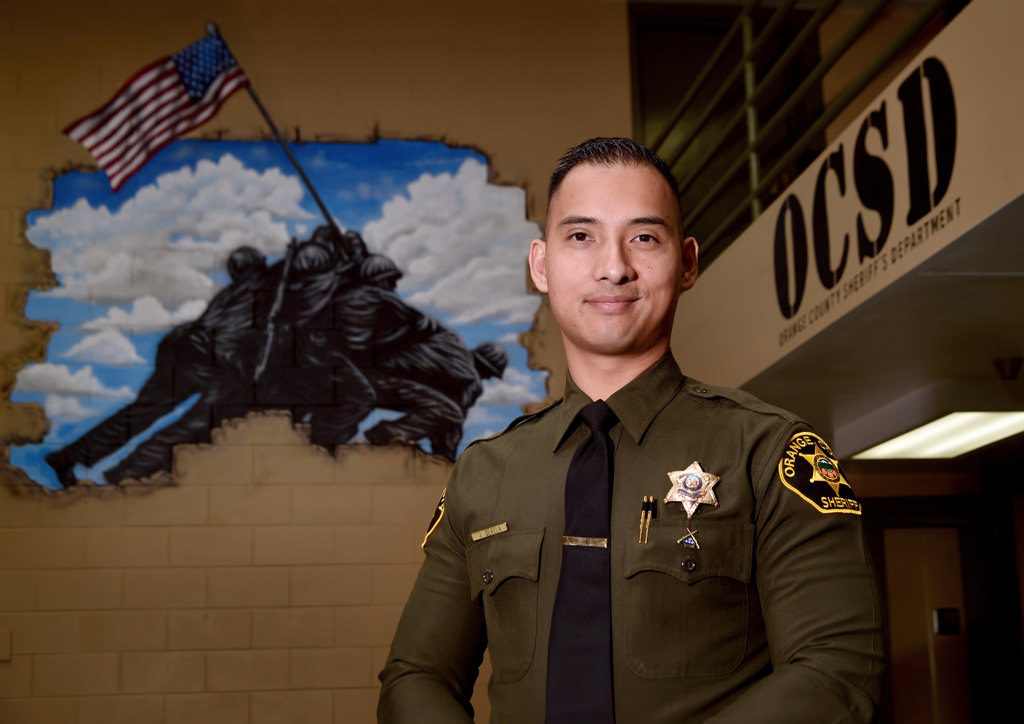
Artist and OCSD Dep. Joe Devela in front of one of the many patriotic-themed murals he painted on the walls of the new Housing Unit for Military Veterans (HUMV) at the Theo Lacy Facility.
Steven Georges/Behind the Badge
Barnes said HUMV inmates will enjoy a strong support system when they’re released.
“I couldn’t be prouder of Garrett,” he said. “I told him personally how proud I am (he is a) pioneer in this program. It takes a lot of courage on his part to step outside his comfort zone (and) risk a little bit with tremendous opportunity and reward.”
Correa, who serves on the The House Committee on Veterans’ Affairs, praised Barnes for thinking outside the box.
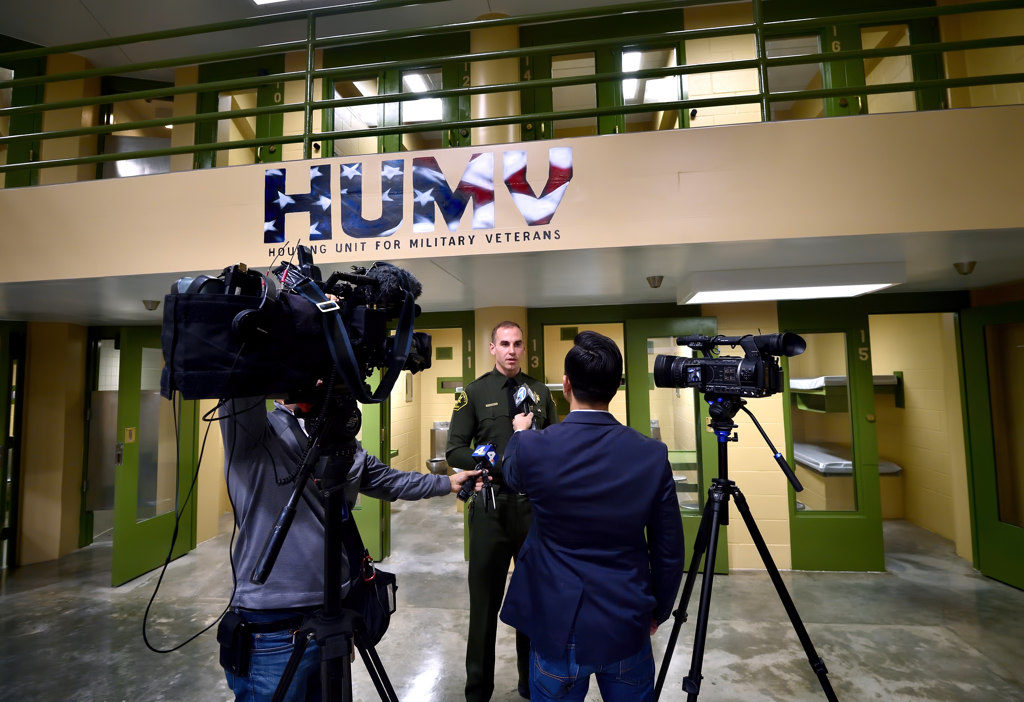
Dep. Matthew Gibbs is interviewed by news crews inside the new Housing Unit for Military Veterans (HUMV) at the Theo Lacy Facility.
Steven Georges/Behind the Badge
“What the real issue here is…we’re talking about a very small percentage of Americans, citizens and residents who go off and fight, serve voluntarily in our military forces, go to Afghanistan, Iraq, and other parts of the world that we don’t even know exist, (to) defend our country.
“They do it with honor, with bravery,” Correa added. “God knows what they see out there on the battlegrounds, and yet when they come back to society, we expect them to turn all of that off and to be good, model citizens. We forget to ask (them), ‘What are those invisible scars that you continue to carry in your soul and in your heart?’”
Added Correa: “As a veteran, we’re going to put you in front of the line to make sure that you get rehabilitated, to make sure that we help you heal those invisible scars, those wounds that you have.
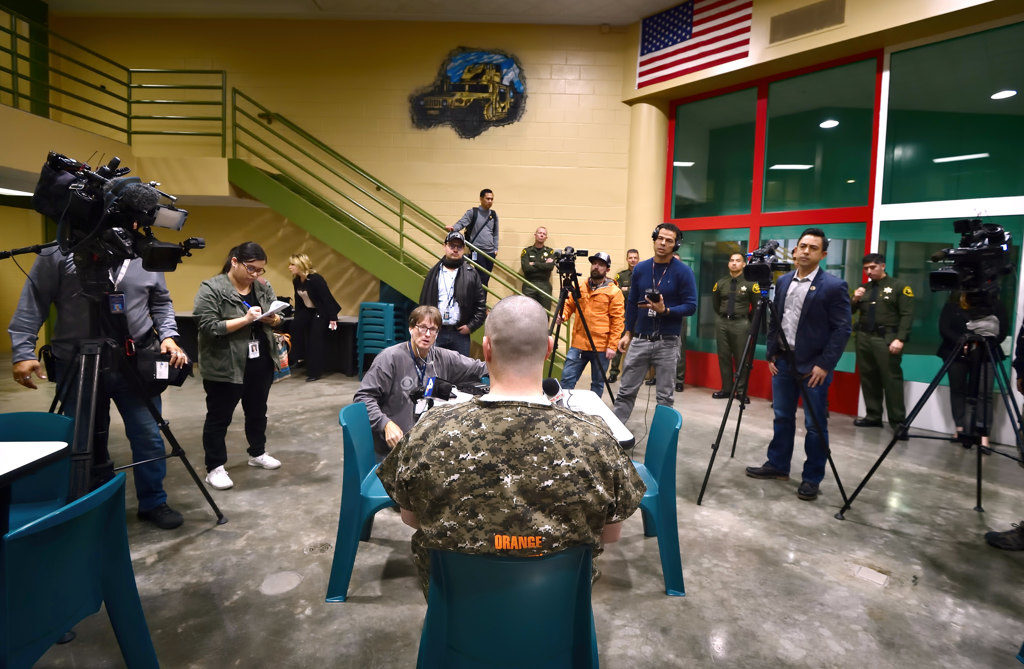
Garrett F., a Purple Heart veteran serving at the Theo Lacy Facility, talks to the media about the new HUMV module while wearing the special inmate uniform for those who qualify to stay at the special facility.
Steven Georges/Behind the Badge
“You’ve earned our respect, and we’re going to take care of you when you get back.”
Umberg is a retired army colonel. He commended Barnes for “having the vision to invest in those who have dedicated at least a portion of their lives to our safety, our national security.
“All of the participants in this program will have sacrificed something,” Umberg added. “Some will have sacrificed their blood. It’s up to us to give them the tools to make sure that whatever mistake they made, that mistake is corrected and that they return to society as complete individuals as they possibly can.”
OCSD Correctional Programs has partnered with 10 agencies to provide programming for HUMV, including the Department of Veterans Affairs, the Tierney Center for Veteran Services, Working Wardrobes, and the Orange County Probation Department, among others.
The HUMV has room to expand to 64 beds and is open to female inmates too, Barnes noted. He said deputies assigned to HUMV all are military veterans.
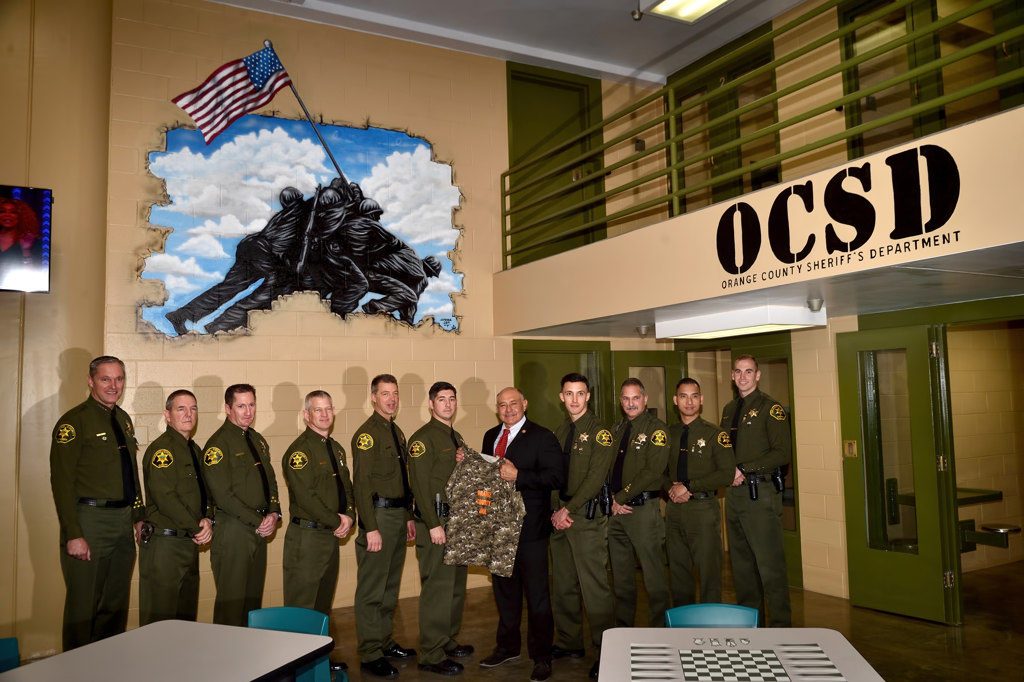
OCSD deputies stand with Congressman Lou Correa as he holds one of the new inmate shirts that will be worn by veterans serving their time in the new Housing Unit for Military Veterans (HUMV) at the Theo Lacy Facility.
Steven Georges/Behind the Badge
The sheriff noted that one county in Arizona has enjoyed a 5 percent recidivism rate with a similar housing unit for jailed veterans.
“I think when you hear 5 percent, it doesn’t really have an impact,” Barnes said. “But what that means is 19 out of 20 people are not returning to custody, which is tremendously successful.”
Garrett said he believes he has a second chance at living a good life.
“And I thank you guys for giving me that second chance,” said Garrett, who was working in the construction industry and hopes to land work in the oil fields after he’s released.
Garrett said he hopes to enroll in substance abuse programs and undergo behavioral therapy to keep sober.
“I feel very honored,” he said of being housed in the HUMV. “Thank you very much.”
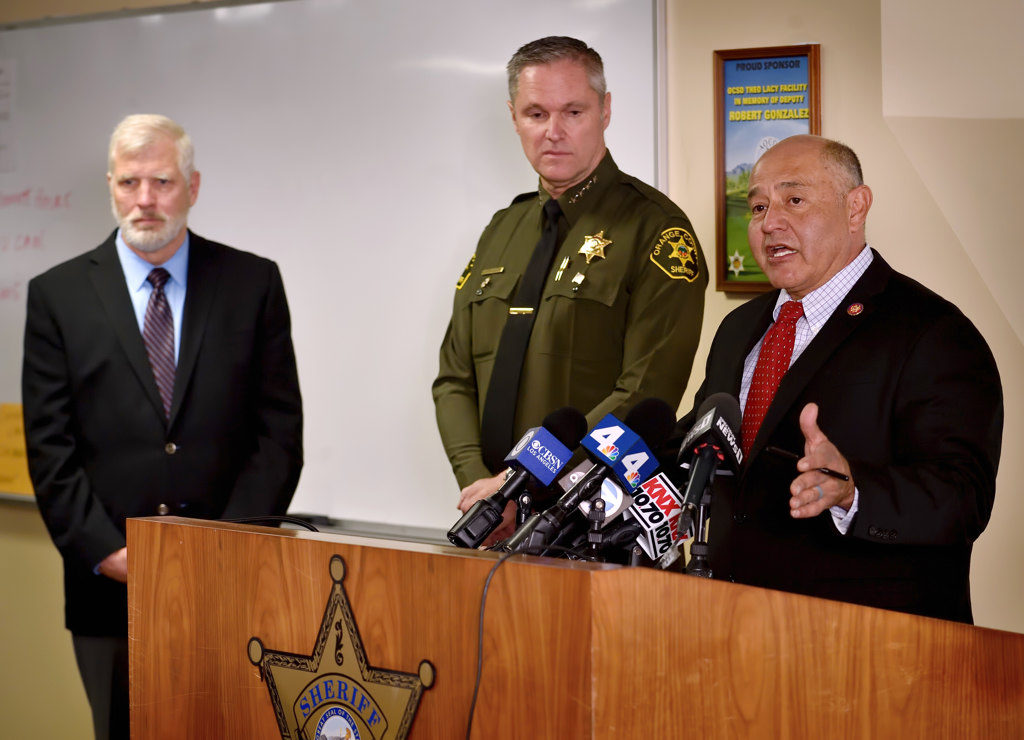
Congressman Lou Correa talks about the veterans the OCSD program is designed to help. Behind him is Sheriff Don Barnes and state Sen. Tom Umberg.
Steven Georges/Behind the Badge
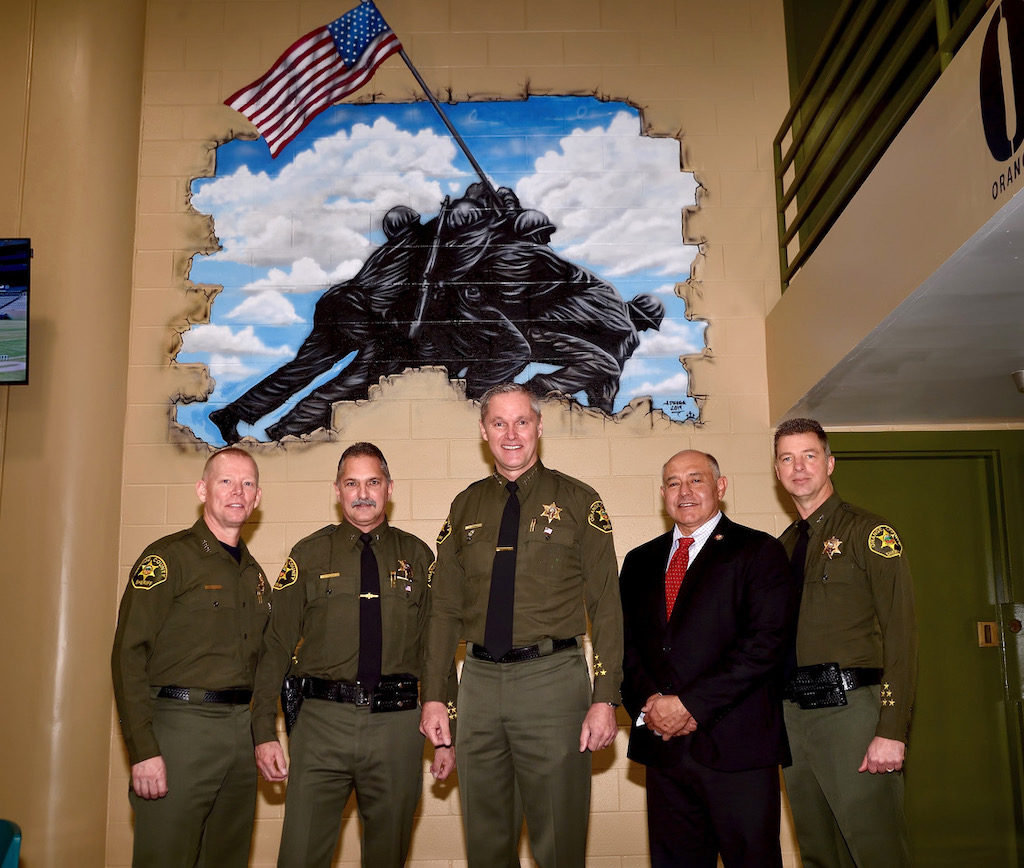
Standing in front of one of the patriotic murals inside the new Housing Unit for Military Veterans (HUMV) at the Theo Lacy Facility are, from left, Undersheriff Bob Peterson, Commander Joseph Balicki, Sheriff Don Barnes, Congressman Lou Correa and Assistant Sheriff William Baker.
Steven Georges/Behind the Badge
 Behind the Badge
Behind the Badge
